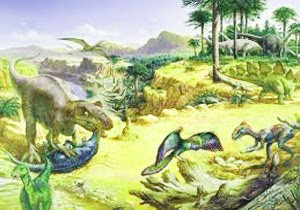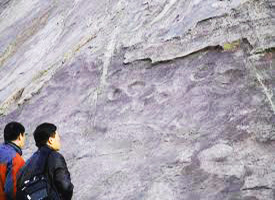Spinosaurus was the largest of all the carnivorous dinosaurs, bigger than Tyrannosaurus and Giganotosaurus. It lived during the center of the Cretaceous Period about 112 million to 97 million years ago, roaming the swamps of North Africa.
Two Spinosaurus species have been named based on the region where they were discovered: Spinosaurus aegyptiacus and Spinosaurus maroccanus.
Spinosaurus means "spine lizard," and suitable descriptor, as the dinosaur had very long spines rising on its back to form what is referred to as a "sail." The spines were more than 10 times the length of the vertebrae structures from which they comprehensive and were slightly longer front to back at the base than higher up.
The distinctive spines were about 5.4 feet long and were likely to have been linked by skin. Because the spines were connected by tissue, the structure may also have been more of a huge bulge than a sail, according to German paleontologist Ernst Stromer.
There has been much technical dispute concerning the evolution and purpose of the Spinosaurus' sail. It is probable that the sail served several purposes, including regulating body temperature by fascinating heat, and attracting mates.
Because of its size, the Spinosaurus did not have many predators, but the sail could have been used to ward off enemies, as the dinosaur appeared to be twice its bulk when the sail was entirely extended. Paleontologists theorize that the sails were brightly colored, much like the fins of some latter-day reptiles.
The only straight substantiation that Spinosaurus ate fish was a juvenile exposed with fish scales and bones in its stomach. There is also proof that it preyed on other small herbivore dinosaurs and scavenged.
Two Spinosaurus species have been named based on the region where they were discovered: Spinosaurus aegyptiacus and Spinosaurus maroccanus.
Spinosaurus means "spine lizard," and suitable descriptor, as the dinosaur had very long spines rising on its back to form what is referred to as a "sail." The spines were more than 10 times the length of the vertebrae structures from which they comprehensive and were slightly longer front to back at the base than higher up.
The distinctive spines were about 5.4 feet long and were likely to have been linked by skin. Because the spines were connected by tissue, the structure may also have been more of a huge bulge than a sail, according to German paleontologist Ernst Stromer.
There has been much technical dispute concerning the evolution and purpose of the Spinosaurus' sail. It is probable that the sail served several purposes, including regulating body temperature by fascinating heat, and attracting mates.
Because of its size, the Spinosaurus did not have many predators, but the sail could have been used to ward off enemies, as the dinosaur appeared to be twice its bulk when the sail was entirely extended. Paleontologists theorize that the sails were brightly colored, much like the fins of some latter-day reptiles.
The only straight substantiation that Spinosaurus ate fish was a juvenile exposed with fish scales and bones in its stomach. There is also proof that it preyed on other small herbivore dinosaurs and scavenged.





















